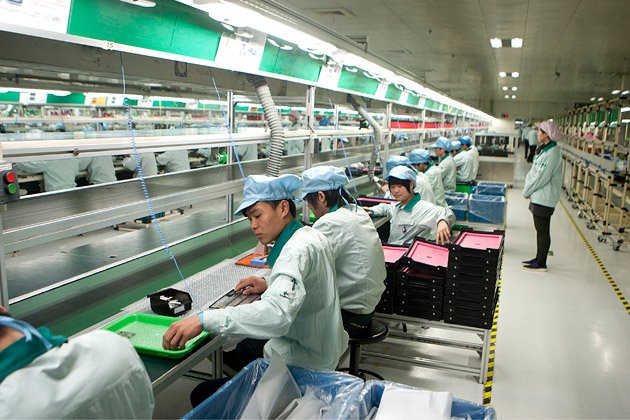
The Chinese economy, world’s second-largest, has slowed and performed worse than many analysts expected in the first quarter of 2013.
Annual growth was 7.7% in Q1 2013, compared with 7.9% in Q4 2012. Analysts had forecast a figure closer to 8%.
China wants to spur growth after it hit a 13-year low in 2012.
Other key data on Monday also came in lower than market expectations, raising questions over the outlook for growth.
Industrial output rose 8.9% in March from a year earlier, much lower than analysts’ targets of 10%.
Meanwhile, fixed asset investment, a key driver of China’s growth, rose at an annual rate 20.9% in the first three months of year. Analysts had expected growth of more than 21%.

“The Chinese economy is showing soft growth momentum in the first quarter,” said Wei Yao of Societe Generale.
“All these figures showed that the economy is in a weak recovery.”
Over the past few years, China has relied heavily on its exports and investment spending to maintain a strong pace of growth.
However, as economic growth in its key markets such as the US and Europe has slowed, and its exports have weakened, there have been calls for China to rebalance its economy.
Beijing has acknowledged this and has indicated that it wants to increase domestic demand to reduce its dependence on exports and achieve more sustainable growth.
At the same time, China has had to deal with a widening wealth gap, which has prompted fears of social unrest in the country.
There have been calls for the new leadership, which took charge in March, to work towards a more inclusive growth model.
Analysts said a slower rate of growth may actually help China, as it tries to achieve those goals.
“Given Beijing’s goal of restructuring the economy, a relatively moderate economic growth is not a bad thing in the longer term,” said Wei Yao of Societe Generale.
She added that this “could help policymakers focus more on the quality rather than speed of the economy”.
China has taken various steps over the past few months to spur growth.
China’s central bank has cut interest rates twice since June to reduce borrowing costs for businesses and consumers and increase lending.
Beijing has also approved infrastructure projects worth more than $150 billion.
Analysts said China was likely to continue to use easy monetary policies as a tool to sustain growth, and would not raise rates or look to limit access to capital.
“Certainly with this number, policy certainly would not tighten and would continue to be quite accommodative,” said Tao Wang, an economist with UBS.
However, some analysts warned against any further aggressive easing measures, adding that such measures may promote asset bubbles and overheat the economy.
“Another year of propped-up growth via state spending and a credit deluge would, we fear, push China dangerously close to proving Wen Jiabao correct – that the current economic model is <<unsustainable>>,” said Alistair Thronton, senior China economist at IHS Global Insight.
“If something is unsustainable, at some point, it won’t be sustained.”
[youtube gwVf-rtcZEc]